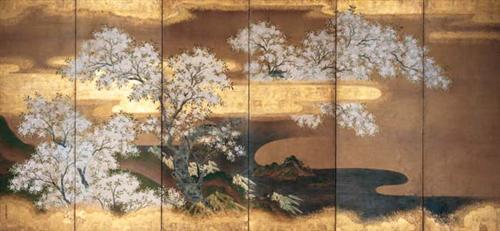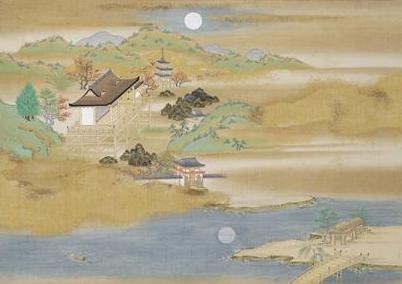Japan art of 17th century: Tosa Mitsuoki
Lee Jay Walker
Modern Tokyo Times

The Edo Period began in the early seventeenth century. Hence, the artist Tosa Mitsuoki (1617-1691) belongs to the early period of Edo art – while belonging to the esteemed art school of Tosa.
Mitsuoki galvanized the art school of Tosa by moving to Kyoto and gaining favor in important circles. This famous name – similar to the art school of Kano – was able to re-invent itself during times of declining popularity. Therefore, Mitsuoki is a pivotal member of this famous school – who enabled the family line (and adopted artists of the art school of Tosa) to prosper during the Edo Period.

The Met Museum says, “Artists of the Tosa school are known for refined and colorful yamato-e paintings depicting quintessentially Japanese themes such as scenes from The Tale of Genji and other literary classics. Tosa Mitsuoki is, however, also renowned for his works showing quails with flowers or grasses, reflecting an indebtedness to Chinese painting of the Southern Song dynasty. A bird-and-flower painting by Mitsuoki that does not depict quails, such as this rendering of two egrets with cotton roses, is therefore quite rare.”
Tosa Mitsunobu (1434-1525) is the real founder of the Tosa school of art. This concerns the artistic skills of Mitsunobu – along with the potent connections he held within the Imperial Court. The famous “Three Brushes” of the art school of Tosa are Tosa Mitsunobu, Tosa Mitsunaga, and Tosa Mitsuoki.

The British Museum says, “The Tosa school of painters were official artists to the imperial court from the fifteenth to the end of the nineteenth century. The family name Tosa is said to derive from Tosa Province in Shikoku where the court painter Fujiwara no Tsunetaka became governor in the thirteenth century, but the Tosa artists of the Edo period (1600-1868) date their lineage back further still, to the eleventh century. They painted in the Yamato-e style, often taking their themes from classical literature, especially Genji monogatari (‘The Tale of Genji’).”
Overall, Mitsuoki galvanized this esteemed school of art in the seventeenth century. Hence, he laid the firm foundation base for the continuing success of Tosa throughout the Edo Period.

PLEASE DONATE TO HELP MODERN TOKYO TIMES
Modern Tokyo News is part of the Modern Tokyo Times group
DONATIONS to SUPPORT MODERN TOKYO TIMES – please pay PayPal and DONATE to sawakoart@gmail.com
http://moderntokyotimes.com Modern Tokyo Times – International News and Japan News
http://sawakoart.com – Sawako Utsumi’s personal website and Modern Tokyo Times artist
https://moderntokyonews.com Modern Tokyo News – Tokyo News and International News
PLEASE JOIN ON TWITTER
https://twitter.com/MTT_News Modern Tokyo Times
PLEASE JOIN ON FACEBOOK